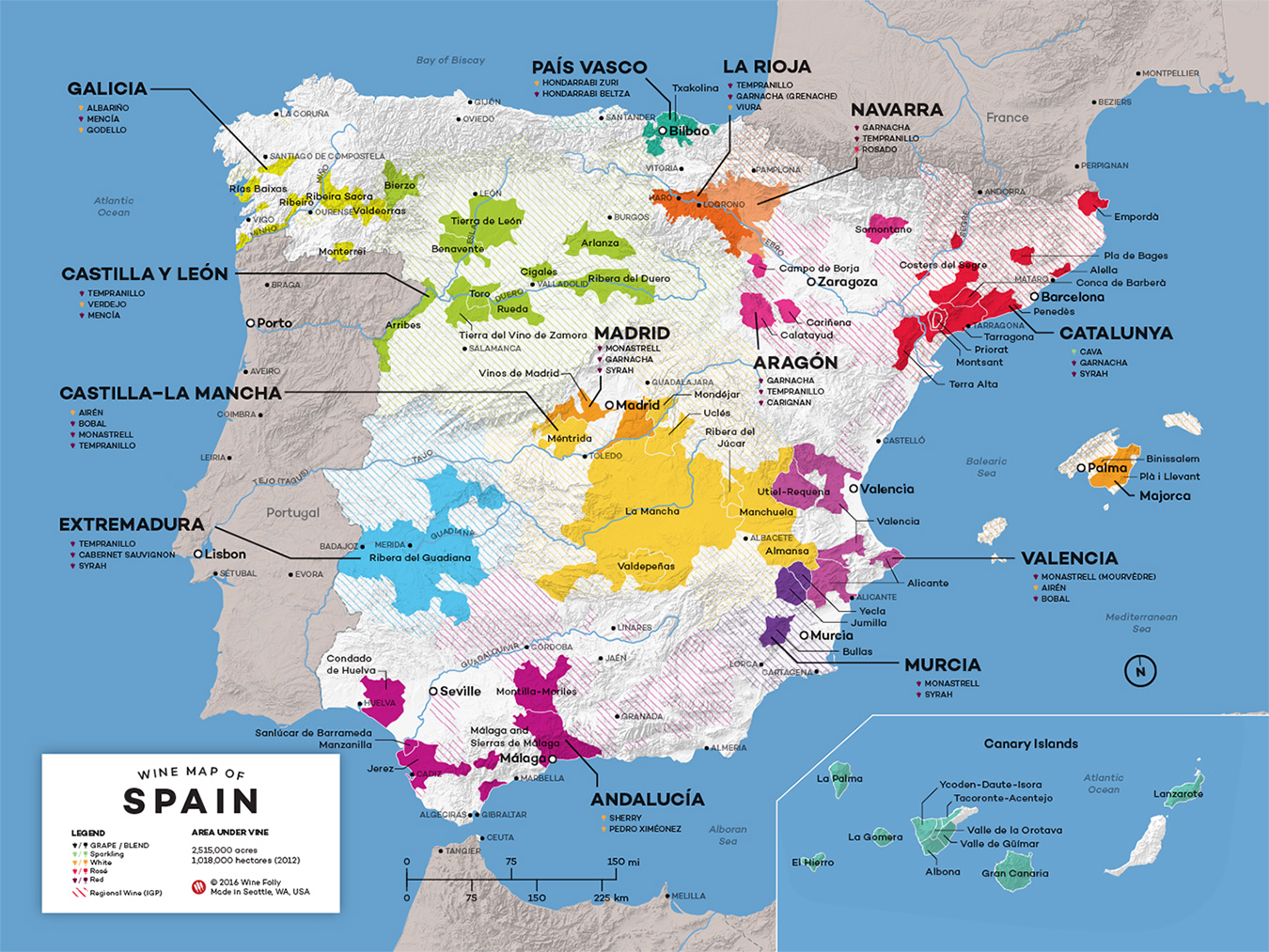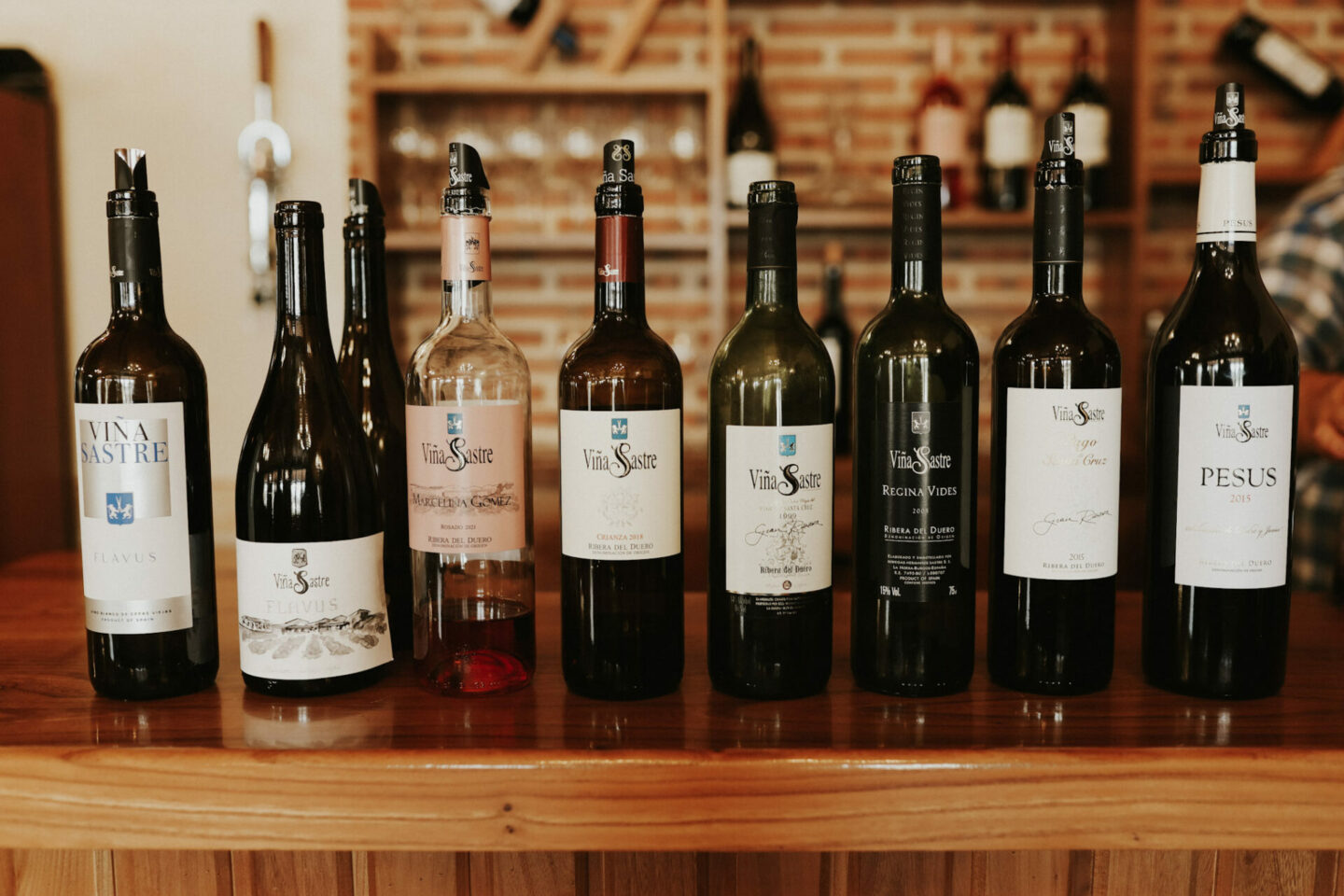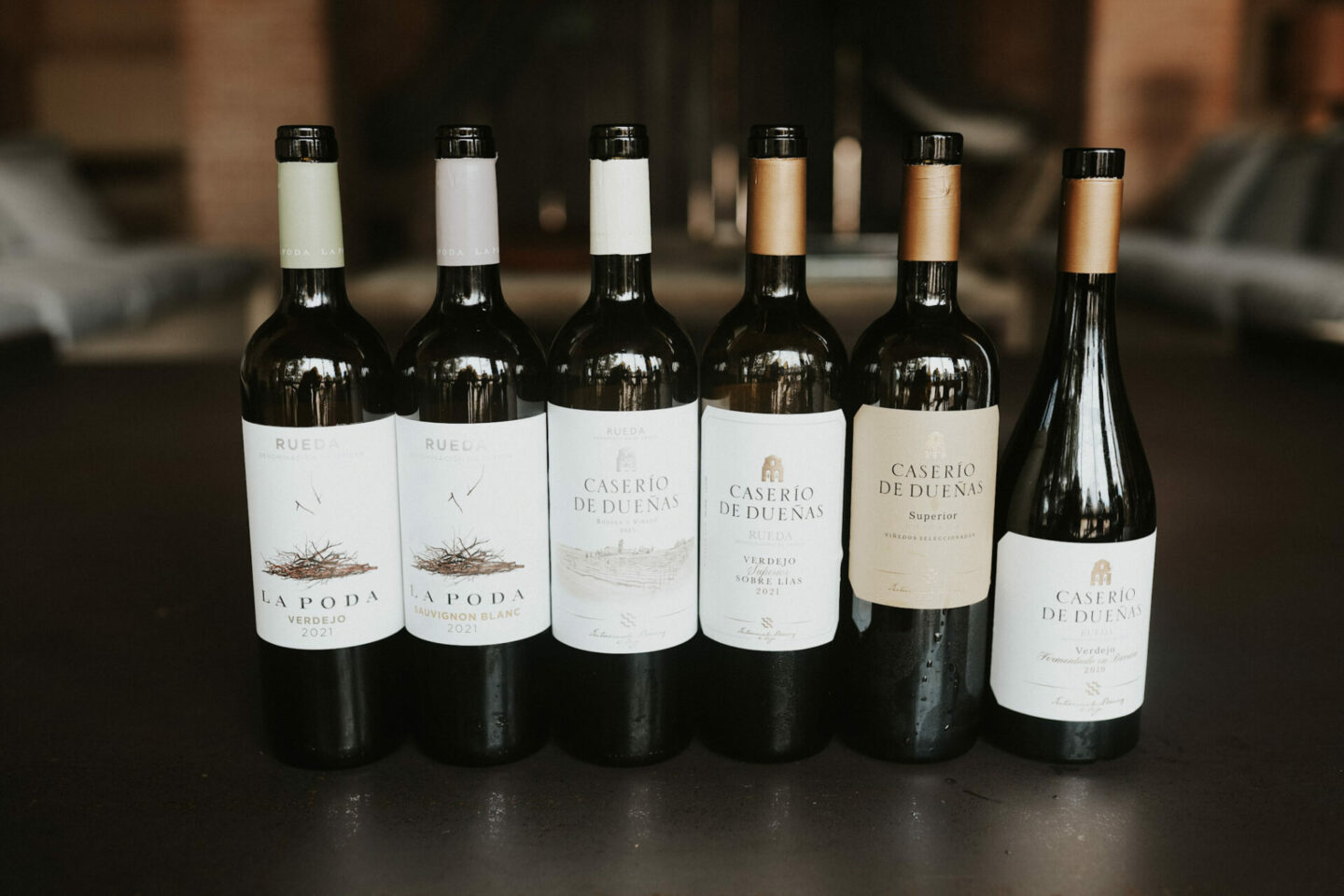
Let’s dive into the world of Spanish wine! Spain, a country known for its vibrant culture and rich history, has a wine tradition that dates back centuries.
From the lush vineyards of Rioja to the sun-soaked landscapes of Andalusia, each sip tells a story of tradition, innovation, and the Spanish way of life.
In this blog post, we’ll embark on a journey through the diverse and flavorful world of Spanish wines, exploring the unique grape varieties, winemaking techniques, and the essence that makes each bottle a celebration of Spain’s winemaking heritage.

Spanish Wine Regions
Exploring the diverse world of Spanish wines is a captivating journey through its unique regions.
In Spain, the wines are often classified by their geographic origins, each region weaving its own tale of terroir and tradition. They also often have stringent guidelines that govern what grapes can be included in the final blend and the aging process it must complete.
Let’s embark on a virtual tour of some iconic Spanish wine regions, where the soil, climate, and passion of the winemakers converge to create exceptional wines that reflect the essence of their origin.
Common Spanish Wine Regions
Rioja: Nestled in northern Spain, Rioja is arguably the most famous wine region. Known for its exceptional red wines predominantly made from Tempranillo grapes, Rioja wines often exhibit a perfect balance of fruitiness and oak-aged complexity.
Ribera del Duero: Located along the Duero River, this region is celebrated for its robust red wines, primarily crafted from the Tempranillo grape. The wines of Ribera del Duero are known for their intensity, depth, and aging potential.
Priorat: In the northeast of Spain, Priorat produces powerful and concentrated red wines. The region’s unique slate soil, known as “llicorella,” imparts distinctive mineral characteristics to the wines, making them highly sought after.
Rueda: Known for its white wines, Rueda is located in the heart of Spain. The Verdejo grape thrives in this region, producing crisp and aromatic white wines with notes of citrus and tropical fruits.
Catalonia (Penedès): Catalonia, home to the vibrant city of Barcelona, is also a notable wine region. Penedès, within Catalonia, is renowned for its production of Cava, Spain’s sparkling wine, made using traditional methods.
Galicia (Rías Baixas): In the northwest, Galicia is famous for its Albariño wines. Rías Baixas, within Galicia, produces refreshing and aromatic white wines that perfectly complement the region’s seafood-rich cuisine.
These are just a few highlights, and there are many more regions to explore in the diverse and dynamic world of Spanish wines. Each region contributes its unique flavors and styles, making Spanish wines a delightful tapestry of taste and tradition.

Spanish Red Wine
Spain is home to a variety of red wine grape varieties, each contributing to the diverse landscape of Spanish red wines. Some of the most popular Spanish red wine varieties include:
Tempranillo
Often considered the noble grape of Spain, Tempranillo is prominent in regions like Rioja and Ribera del Duero. It produces wines with a balance of fruitiness, acidity, and oak-aged complexity.
Garnacha (Grenache)
Widely planted in regions such as Priorat and Campo de Borja, Garnacha yields bold and fruity red wines. It is known for its versatility and ability to thrive in different climates.
Monastrell (Mourvèdre)
Found in regions like Jumilla and Yecla, Monastrell produces robust and full-bodied red wines. The grape’s thick skin contributes to wines with intense color and flavors of dark fruits.
Bobal
Indigenous to the Utiel-Requena region, Bobal is gaining recognition for its distinctive character. Wines made from Bobal often feature dark fruit flavors, earthiness, and a slightly rustic charm.
Mencia
Predominantly found in Bierzo, Mencia produces red wines known for their finesse and aromatic complexity. Expect flavors of red fruits and subtle floral notes.
Cabernet Sauvignon and Merlot
While not indigenous wines of Spain, these international varieties are also planted across the country, contributing to the wines produced.
These red grape varieties showcase the diversity and richness of Spanish winemaking, offering a wide range of flavors and styles for wine enthusiasts to explore.
Related: Learn more about Spanish Red Wines

Spanish White Wine
Spain boasts a diverse array of white wine varieties, each offering unique flavors and characteristics. Some of the most popular Spanish white wine varieties include:
Albariño
Hailing from the Rías Baixas region in Galicia, Albariño wines are known for their crisp acidity, citrus notes, and refreshing qualities. It’s a perfect choice to complement seafood dishes. If you’re a fan of Sauvignon Blanc, you’ll love this grape!
Verdejo
Mainly found in the Rueda region, Verdejo produces aromatic and vibrant white wines with flavors of tropical fruits, herbs, and a zesty acidity. It’s often enjoyed as a youthful and lively wine.
Godello
Grown in regions like Valdeorras and Bierzo, Godello produces white wines with a balance of richness and acidity. Expect flavors of ripe stone fruits, floral notes, and a smooth texture.
Viura (Macabeo)
Commonly used in the production of Cava, Viura contributes to fresh and lively sparkling wines. It also produces still white wines with floral aromas, citrus flavors, and a crisp finish.
Xarel-lo
Another grape prominent in Cava production, Xarel-lo adds body and structure to sparkling wines. It offers flavors of green apple, citrus, and a hint of almond.
Airen
Although often used in blends, Airen is one of the most widely planted white grape varieties in Spain. It produces light and easy-drinking wines with subtle floral and fruity notes.
Related: Learn more about Spanish White Wines

Spanish Sparkling Wine
Spanish sparkling wine is primarily represented by Cava, a sparkling wine made using traditional methods. It is produced mainly in Catalonia, particularly in the Penedès region in Spain.
Cava can be made from indigenous grape varieties like Macabeo, Xarel-lo, and Parellada, as well as international varieties.
Production Method: Cava undergoes a secondary fermentation in the bottle, contributing to its fine bubbles and complex flavors. The aging process can vary, with designations such as “Cava,” “Reserva,” and “Gran Reserva” indicating different aging periods.
Flavor Profile: Cava typically exhibits a crisp and refreshing profile with notes of citrus, green apple, and sometimes, floral aromas. The extended aging on lees can add complexity and a creamy texture to the wine.
Conclusion
As we raise our glasses to the diverse and enchanting world of Spanish wines, it becomes evident that each bottle tells a story, a narrative woven with the threads of tradition, terroir, and passion.
From the iconic Tempranillo of Rioja to the refreshing Albariño of Rías Baixas, Spanish wines invite us on a journey of discovery. Cheers!
